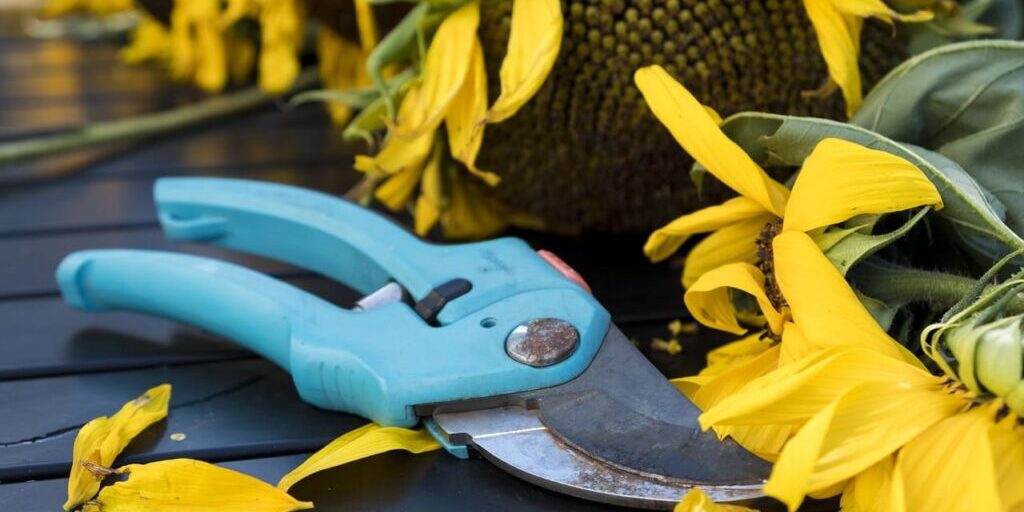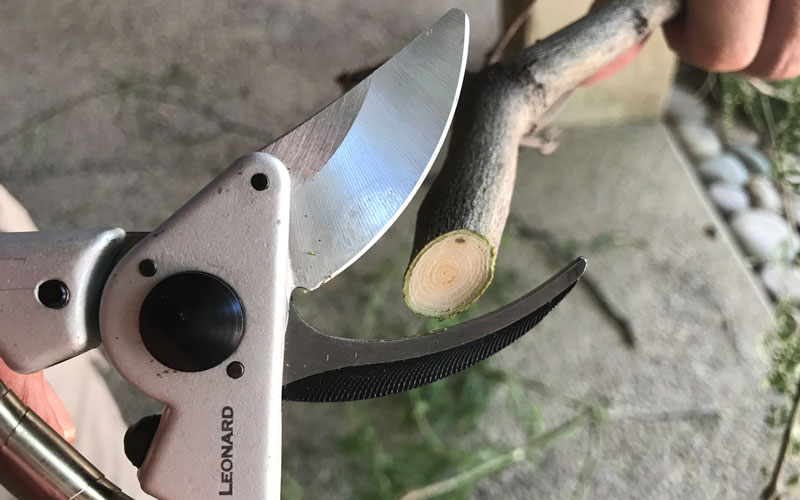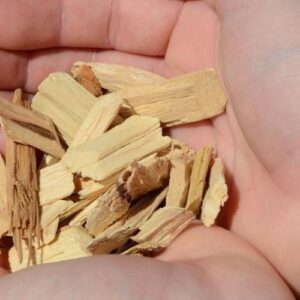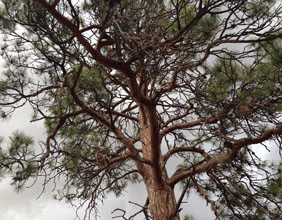
“The right tool for the job” is more than just an old saying. It’s especially accurate when you’re going to prune your trees. The wrong tool, along with its wrong application, can seriously injure a tree—and possibly you, too.
While we recommend all major tree work be done by a certified arborist, some homeowners prefer to do smaller pruning jobs themselves. To help you get the best results, this article describes the right pruning tools to use for specific pruning tasks, the features to look for when choosing your tools, and safety considerations to be aware of.
PRUNING TOOL BASICS
The first thing to consider when buying or using tools for tree work of any kind is their quality. A good tool may be inexpensive, but more often you will find that cheap pruning tools are weaker, lighter-weight versions of standard tools.
Cheap pruning and tree care tools often use:
- Plastic components instead of metal
- Low-quality pot metal or alloy instead of steel
- Cast steel instead of forged steel
Consider the jobs you want your tool to perform and the energy needed to perform those jobs. Your investment in a good-quality pruning tool is a small cost compared to the likelihood of a cheap tool breaking—potentially injuring you and your tree—and needing to be replaced.
Good tools need to be maintained. Cutting blades should be sharpened after each use (read more about the best tool sharpeners here), all debris and sap should be wiped off, and all metal parts should be oiled. If you store your tools for any length of time, they should be more heavily oiled to prevent rust and seizing.
If you’re not able to purchase high-quality tools, or you have no place to store and maintain them, you may find that hiring an insured, bonded, and trained tree service professional who has all the equipment needed for a job is the better value.
WHICH PRUNING TOOLS TO USE
Chances are good that you, along with almost everyone else, have forced a tool to do a makeshift job, and usually it works out. But when the job is tree pruning, the risk of injury is too great to justify improvising.
Pruning tools are designed according to their function and each tool has a limit to its use. Forcing or mishandling a tool is often the cause of damage and injury to you and your tree.
From small to large tasks, common pruning tools include:
Hand Pruners
Hand pruners, also called clippers, secateurs, or hand shears.
Among the most common garden tools, hand pruners:
- Are used for all small cuts of both soft and woody plant material and for fine aesthetic pruning
- List on their packaging the maximum size the blades can cut, usually ½” to ¾” in diameter
- Come with scissoring blades, called bypass blades (these are a better choice for cutting live wood than anvil-blade pruners)
- Come in many designs for different hand sizes, as well as for left-handed people
You can read more specifics about the best hand pruners here
Loppers
Instead of forcing your hand pruners when you have larger branches to cut, use loppers!
Loppers, also called long-handled pruners:
- Look a lot like hand pruners, with the addition of long handles
- Generally can cut material up to 1 ½” to 2” diameter
- Allow the scissoring blades to open wider than hand shears and to cut with more force
As with hand pruners, choose loppers with scissoring blades instead of anvil blades. Anvil blades are far more likely to crush stems and branches instead of cleanly cutting them. This increases the chance of wounding tree tissue.
You can read more specifics about the best loppers here
Pruning Saws
When you have branches that are larger in diameter than hand pruners or loppers can manage, or branches that are hard to reach with a scissoring blade, choose a pruning saw.
Pruning saws:
-
- May have a fixed, open blade or may fold shut, with the blade edge enclosed in the handle
- May have more than one locked sawing position, good for hard-to-reach places
- Will list on packaging the maximum diameter it can cut
- Have blades whose teeth also determine the maximum diameter; coarse teeth can cut a larger diameter than fine teeth
- Generally can cut branches between 2 ½” to 3” in diameter
- Note: a bow saw is a pruning saw but is used to cut much larger branches than the pruning saws mentioned here and is often used to cut logs for firewood
Read more about different pruning saws, and their specific uses, here
Pole Saws & Pole Pruners
If you have branches to cut that are out of reach, use a telescoping hand pole saw or pole pruner.
Pole saws:
-
-
- May have scissoring blades (like hand pruners) at their end, which you operate by pulling a cord, lever, or pistol grip, OR
- May have a fixed blade like a pruning saw, which you use as a hand saw
-
Because of the distance between you on the ground and the blades at the end of the pole—and the strength required by you to hold and cut branches—these pruning tools will often make less accurate cuts, and you may not be able to cut the maximum branch diameter. Remember that the high branches you are cutting will also be moving as you saw them, as you don’t have an extra hand to steady the branch.
Whenever you’re pruning above shoulder height, wear a hardhat and eye protection to shield yourself from falling branches and sawdust. Being struck by a heavy branch that unexpectedly comes loose is a common cause of injury, as is eye damage from falling debris.
NOTE: High branches may be pruned with hand tools if you’re standing on a ladder, such as the tripod, or orchard, ladders used by trained tree care professionals. However, we do not recommend homeowners do this – a fall from a ladder can be dangerous or fatal. It’s best to do pruning from the ground or, at most, a short stepladder that’s firmly held by an assistant.
Power Pole Saws or Power Pole Pruners
Pole pruners may use batteries, an electric cord, or gas to power a moving saw blade at the end of a pole.
For most power pole pruners:
-
-
- The pole generally telescopes 8’ to 10’
- The working height is the length of the pole plus your arm length (and your strength to hold up a tool that can weigh 20 pounds)
- Depending on type and make, power pole pruners can cut branches from 2” to 8” in diameter
- Along with how the tool is powered, the cutting bar length determines the maximum branch diameter that can be cut
-
NOTE: Power pole pruners of each type will make noise and vibrate, the pruner can weigh up to 20 pounds, and motorized blades run much faster than hand-operated blades. Safety, and safety gear, is especially important when using power pruners.
You should always read about your power pruner choice first. Remember that corded pruners limit the distance you can go from an electrical outlet and their amperage determines their maximum cut diameter, battery pack power sets maximum blade power, and gas engine size determines maximum cutting strength.
Chainsaws
Large, powerful, and dangerous, chainsaws can cut and remove large tree branches and trunks. Professional tree pruners are always trained in their use, as well as in climbing and attaching chainsaws with ropes.
Because of the risk of injury to you and your trees, neither electric- nor gas-powered chainsaws are recommended for homeowner use, on the ground or up in a tree. If you have large branches to remove, or a trunk to cut, call a professional tree care expert.
THE TAKEAWAY
Before deciding to do large-scale tree pruning and maintenance yourself, weigh the cost of the following against the cost of hiring tree care professionals.
-
-
-
- Good-quality tools, as well as their storage and maintenance
- Safety gear and the time required for safety and equipment training
- The time required to learn proper pruning techniques (because improper pruning, such as these common pruning practices, can have long-term negative effects on your trees)
- Potential damage to your trees’ health and injury to yourself
- Green waste disposal
-
-
Tree care professionals are trained in all these subjects, and more. Professional tree companies are also insured against damage to your property or your neighbors’, and will efficiently clean up and remove all green waste.
See Our Latest Articles
More Articles Like This

Titan Tree Care is a full-service tree care company located in Anthem, AZ and serving all of North Phoenix. We offer a wide range of services to meet your tree care needs, including tree and palm trimming, tree pruning, tree removal, stump grinding, and more. We also offer insect or disease treatments and fertilization services. We are dedicated to providing high-quality, safe, and effective tree care services to our customers and work hard to ensure that your trees are healthy and look their best.









